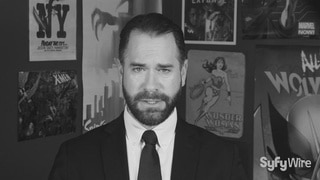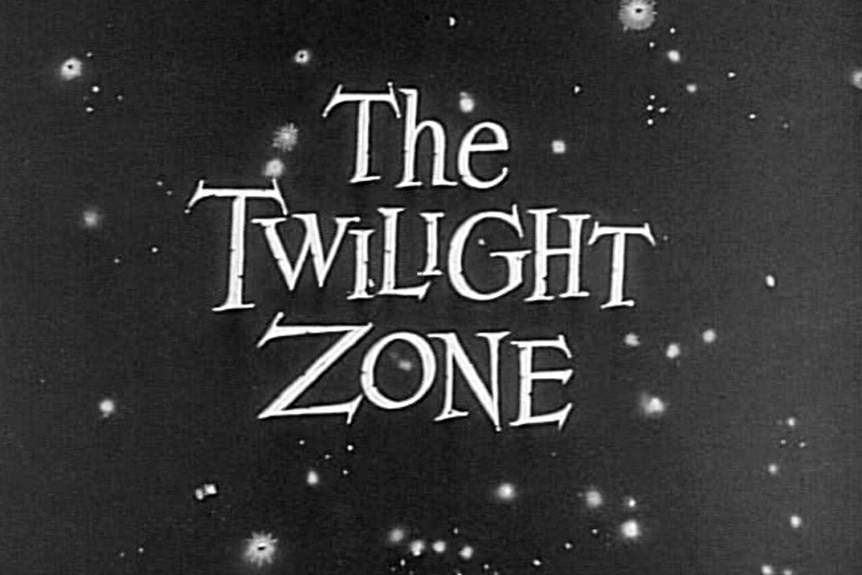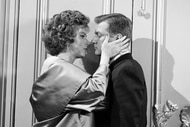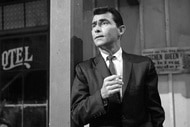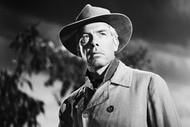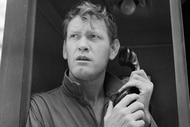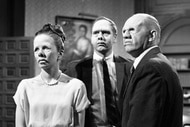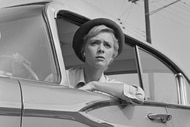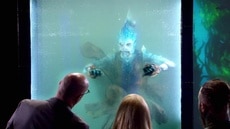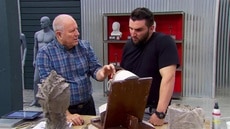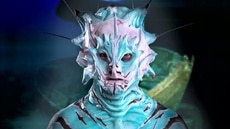Create a free profile to get unlimited access to exclusive videos, sweepstakes, and more!
Why This Classic Twilight Zone Episode Was Filmed to Make You Feel Unsettled - All to Set Up the Twist
No, the cameraman wasn't napping — director Richard L. Bare was making a point!
When watching "Third from the Sun," the fourteenth installment of The Twilight Zone's first season, the following question comes to mind: Did director of photography Harry Wild just fall asleep on the job?
That's because the episode is chock full of bizarre angles — most of them crooked. Upon further inspection, however, the off-kilter aesthetic was not the result of a lazy cinematographer, but the keen storytelling sensibilities of director Richard L. Bare, who would go on to helm a total of seven standalone tales for Rod Serling's beloved anthology (airing regularly on SYFY).
Why The Twilight Zone's "Third from the Sun" looks so crooked
Adapted by Serling from a short story by sci-fi demigod Richard Matheson, "Third from the Sun" takes place on a doomed world about to blow itself to kingdom come over — you guessed it — geopolitical differences. It's a not-so-subtle reflection of the Cold War tensions at the time, but that's very much the point: We're meant to think we're watching events unfold in the United States, circa 1960. Determined to keep themselves and their families from suffering the terrible effects of nuclear fallout, government scientists William Sturka (Fritz Weaver) and Jerry Riden (Joe Maross) steal an experimental aircraft and leave the planet in search of a new home somewhere amongst the stars, thus cheating both Armageddon and the Great Filter.
In the episode's final moments, Serling dishes up a patented Twilight Zone twist: The Sturkas and Ridens are seeking refuge on a little planet not too dissimilar from their point of origin called "Earth." The blue marble we call home was not the setting, but the destination. The reveal was cleverly staring us in the face the whole time. To further foreshadow the surprise, Bare relied on odd angles and "extremely wide-angle lenses," he explains in Marc Scott Zicree's The Twilight Zone Companion. "Even on close-ups, which are normally shot with a 75mm or 100mm lens, I used a 28mm."
"He used wide-angle lenses all the time on the theory that if you were going to tell people in the end that they weren't on Earth, you should have been made a little restless or uncomfortable," adds producer Buck Houghton. "And while Dick was a very straightforward sort of director — he'd have to have a big reason not to use an eye-level camera — he was shooting up under tables and past flashlights to people's faces and all that sort of thing, which I thought was very clever of him. It was an idea of his that I applauded."
That unease, the sense of things not being quite right, also mirrors the anxiety and tension felt by William and Jerry in the run-up to their highly treasonous. Those nerves, which seem to quiver on a muggy summer night, only intensify when their stickler of a colleague, Carling (a wonderfully smarmy Edward Andrews), catches on to the plan and nearly exposes it to the authorities.
And then we have a quote from Sturka about mankind's propensity for ruining "every great thing ever discovered, every fine idea ever thought, every marvelous invention ever conceived. They subvert it ... they make it crooked and devious." The tilted camera throughout underscores that grave pronouncement, subtly telling us this unnamed world is on a downward slope that cannot be corrected.
Classic episodes of The Twilight Zone air regularly on SYFY. Click here for complete scheduling info!

